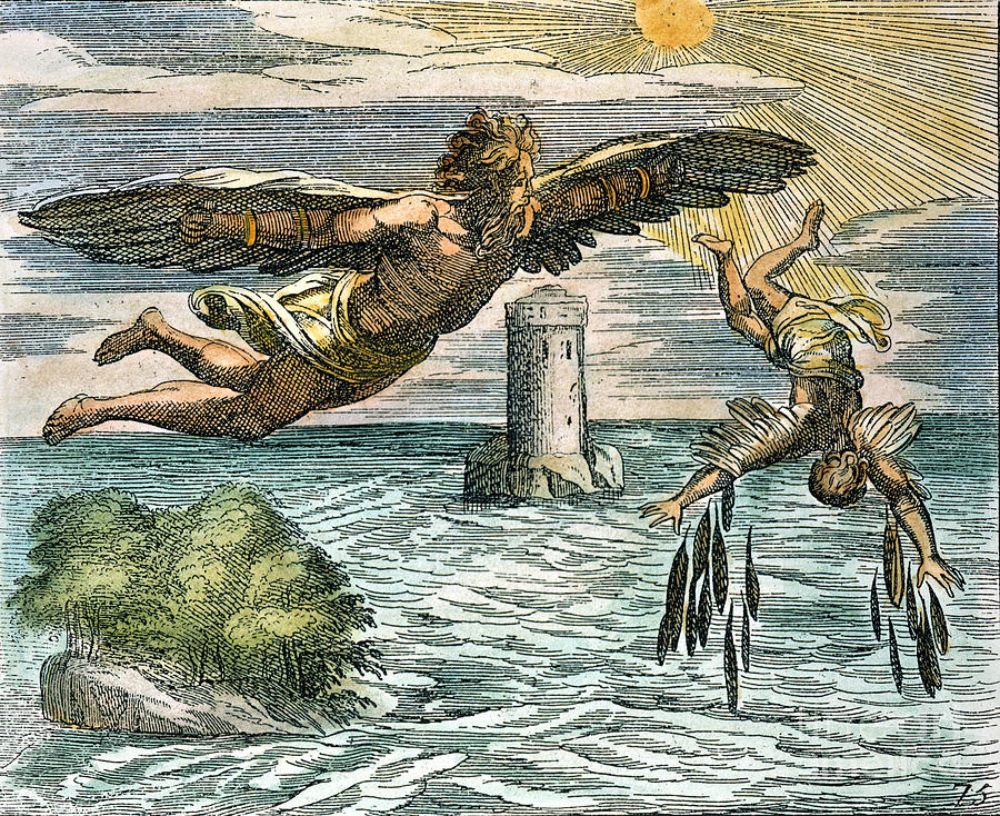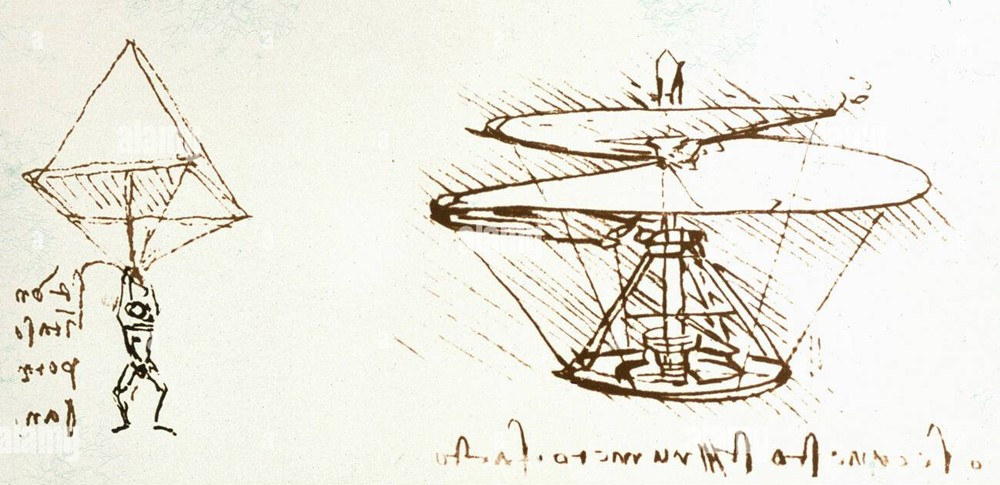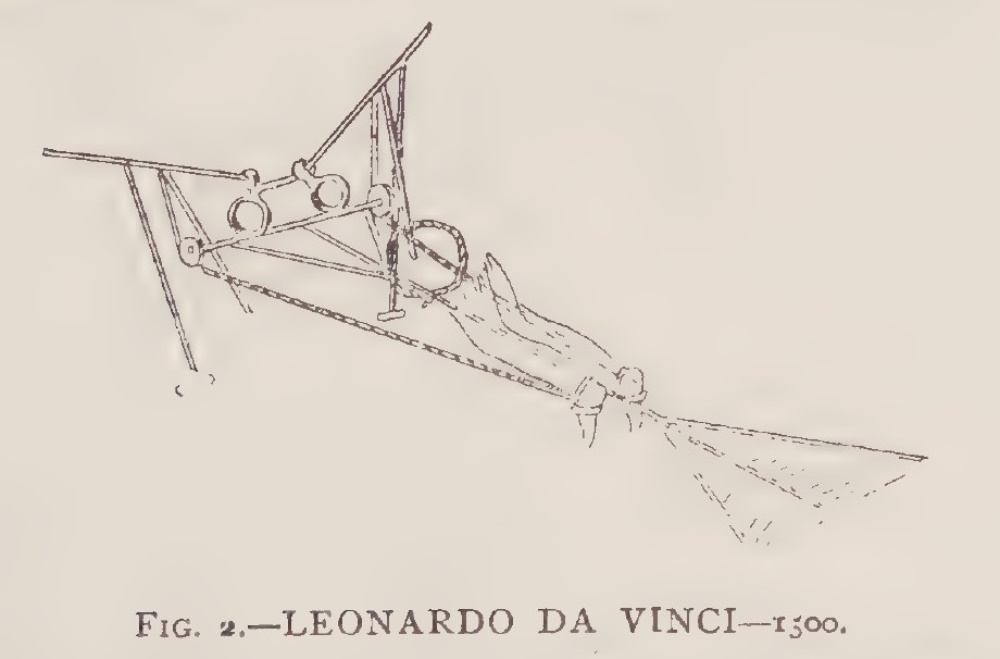1 Dreams and drawings – The inception of aviation
| < Index | Δ Index | Octave Chanute > |
Man has always dreamed of flying.
 Evidence of Chinese sky lanterns – the predecessors of hot air balloons – can be traced to 5th-century BC tomb paintings.
Evidence of Chinese sky lanterns – the predecessors of hot air balloons – can be traced to 5th-century BC tomb paintings.
 The Greek myth of Daedalus and Icarus with wings of feathers and wax is more than 2000 years old.
The Greek myth of Daedalus and Icarus with wings of feathers and wax is more than 2000 years old.

 Around 1500 AD Leonardo da Vinci made sketches of a parachute, an aerial screw or helicopter and a man-powered flapping-wing flying device or ornithopter.
Around 1500 AD Leonardo da Vinci made sketches of a parachute, an aerial screw or helicopter and a man-powered flapping-wing flying device or ornithopter.
He is said to have experimented with aerial screws made of paper, and also to have seriously contemplated building an ornithopter. Had he built such a machine he would quickly have discovered that human muscles are not powerful enough to sustain flight.
Over the following centuries, there were many attempts to fly or glide, and observations were made of basic theory – e.g. tables listed the relationship of weight v wing area in different species of bird.
In 1894, these endeavours were collated by Octave Chanute – godfather of the modern aeroplane – in Progress in flying machines
This important work was reprinted in 1976, with this Foreword by Alan B. Shepard, the First man in outer space.
FOREWORD
From primitive times man has watched the birds and yearned to fly. Ancient fables and ballads down through the years tell of this quest. Yet only during the century past, have we left our plodding earthbound existence to crisscross the world by air—to fly at supersonic speeds—to make distant trips into outer space, where I and others have walked on the moon.
This classic book, Progress in Flying Machines, was first published in 1894 by a remarkable man of vision — Octave Chanute. He was a noted engineer who encouraged scientists, mechanics, and dreamers to keep trying to master the secrets of the birds. There was no question in his mind that human flight could be accomplished—it was only a matter of time.
It was Chanute to whom the Wright Brothers wrote in 1899 for information on gliders—how to build them and where to fly them. Chanute was a genius who might well be called the “Father of Aviation.” Because of the influence of his experiments, his lectures and his published works, he compiled this pioneer compendium of all current knowledge on building and operating what he called “flying machines.”
The last paragraph of this book deserves mention first because it explains the reasons for publishing this book, and for republishing it today.
“Let us hope that the advent of a successful flying machine, now only dimly foreseen and nevertheless thought to be possible, will bring nothing but good into the world; that it will abridge distance, make all parts of the globe accessible; bring men into closer relations with each other, advance civilization; and hasten the promised era in which there shall be nothing but peace and goodwill among all men.”
Rear Admiral Alan B. Shepard, United States Navy (Ret.) Astronaut First man in outer space.
Here is a copy of Progress in flying machines
| < Index | Δ Index | Octave Chanute > |